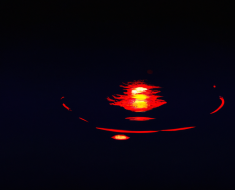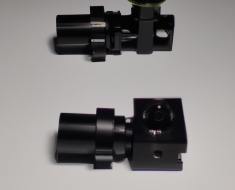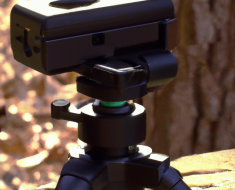“See the difference with Optics Showdown: Comparing Holographic vs. Reflex Sights”
Pros and Cons of Holographic Sights
When it comes to choosing the right sight for your firearm, there are a variety of options available on the market. Two popular choices are holographic sights and reflex sights. Both have their own set of pros and cons, so it’s important to understand the differences between the two before making a decision.
Holographic sights are known for their advanced technology and precision. They use a laser to create a holographic reticle that is superimposed on the target. This allows for quick and accurate target acquisition, making them a favorite among competitive shooters and law enforcement professionals.
One of the biggest advantages of holographic sights is their unlimited eye relief. This means that you can maintain a clear sight picture regardless of where your eye is positioned behind the sight. This makes them ideal for shooting in awkward positions or from behind cover.
Another benefit of holographic sights is their ability to provide a wide field of view. This allows shooters to maintain situational awareness while keeping their target in sight. This can be especially useful in tactical situations where quick target acquisition is crucial.
However, holographic sights do have some drawbacks. One of the main concerns is their battery life. Because they use a laser to create the reticle, they can drain batteries quickly, especially if left on for extended periods of time. This can be a major inconvenience, especially in high-pressure situations where you need your sight to be reliable.
Another downside to holographic sights is their cost. Due to their advanced technology, holographic sights tend to be more expensive than reflex sights. This can be a deterrent for some shooters who are on a budget or who don’t require the advanced features that holographic sights offer.
Despite these drawbacks, holographic sights are still a popular choice for many shooters due to their precision and advanced technology. If you’re looking for a sight that offers quick target acquisition and unlimited eye relief, a holographic sight may be the right choice for you.
In conclusion, holographic sights offer a number of advantages, including unlimited eye relief and a wide field of view. However, they do have some drawbacks, such as limited battery life and a higher cost. Ultimately, the decision between holographic and reflex sights will come down to your personal preferences and shooting needs. Take the time to research and test out both options to determine which sight is best suited for you and your firearm.
Pros and Cons of Reflex Sights
When it comes to choosing the right sight for your firearm, there are a variety of options available on the market. Two popular choices are holographic sights and reflex sights. In this article, we will be focusing on the pros and cons of reflex sights to help you make an informed decision.
Reflex sights, also known as red dot sights, are a popular choice among shooters for their simplicity and ease of use. One of the main advantages of reflex sights is their ability to provide quick target acquisition. The red dot or reticle is projected onto a lens in the sight, allowing the shooter to place the dot on the target and fire. This makes reflex sights ideal for fast-paced shooting scenarios, such as competitions or self-defense situations.
Another benefit of reflex sights is their versatility. They can be used on a wide range of firearms, from handguns to rifles, making them a popular choice among gun owners. Reflex sights are also lightweight and compact, making them easy to mount on your firearm without adding extra bulk or weight.
In addition to their ease of use and versatility, reflex sights are also known for their durability. Most reflex sights are built to withstand harsh conditions, such as recoil from firing a gun or exposure to the elements. This makes them a reliable choice for shooters who need a sight that can hold up in tough situations.
However, reflex sights do have some drawbacks that shooters should be aware of. One of the main disadvantages of reflex sights is their limited battery life. Since most reflex sights use batteries to power the red dot, shooters will need to regularly replace or recharge the batteries to ensure the sight is functioning properly.
Another potential downside of reflex sights is their limited range. While reflex sights are great for close to mid-range shooting, they may not be as effective for long-distance shooting. Shooters who need to engage targets at longer distances may find that a different type of sight, such as a magnified scope, is more suitable for their needs.
Despite these drawbacks, reflex sights remain a popular choice among shooters for their simplicity, ease of use, and durability. Whether you are a competitive shooter, a hunter, or a gun enthusiast, reflex sights can provide a reliable and effective aiming solution for your firearm.
In conclusion, reflex sights offer a number of advantages for shooters, including quick target acquisition, versatility, and durability. While they may have some limitations, such as limited battery life and range, reflex sights remain a popular choice for many gun owners. If you are in the market for a new sight for your firearm, consider the pros and cons of reflex sights to determine if they are the right choice for you.
Accuracy Comparison between Holographic and Reflex Sights
When it comes to choosing the right sight for your firearm, there are a variety of options available on the market. Two popular choices are holographic sights and reflex sights, each offering unique features and benefits. One key factor to consider when comparing these two types of sights is accuracy.
Holographic sights use a laser to project a reticle onto a holographic film, creating a clear and precise aiming point. This technology allows for quick target acquisition and improved accuracy, making it a popular choice among shooters. Reflex sights, on the other hand, use a reflective lens to create a red dot or other reticle that is superimposed onto the target. While reflex sights are also known for their speed and ease of use, some shooters may find that they are not as accurate as holographic sights.
In terms of accuracy, holographic sights have the edge over reflex sights. The holographic reticle is typically more precise and allows for better shot placement, especially at longer distances. The holographic technology used in these sights provides a clear and sharp image of the reticle, making it easier to align with the target. This increased accuracy can be crucial in situations where precision is key, such as competitive shooting or hunting.
Reflex sights, while still accurate in their own right, may not offer the same level of precision as holographic sights. The red dot or other reticle projected by a reflex sight can sometimes be less defined, making it harder to precisely aim at the target. This can result in slightly less accurate shots, particularly at longer ranges. However, reflex sights are still a popular choice for many shooters due to their speed and ease of use.
In practical terms, the difference in accuracy between holographic and reflex sights may not be significant for most shooters. Both types of sights are capable of providing accurate shot placement, especially at shorter distances. However, for those who require the highest level of precision, such as competitive shooters or military personnel, a holographic sight may be the preferred choice.
It’s important to note that accuracy is not the only factor to consider when choosing a sight for your firearm. Other factors, such as durability, battery life, and ease of use, should also be taken into account. Ultimately, the best sight for you will depend on your individual needs and preferences.
In conclusion, when comparing holographic and reflex sights in terms of accuracy, holographic sights come out on top. Their precise reticle and clear image make them a popular choice for shooters who require the highest level of accuracy. However, reflex sights still offer good accuracy and are a great option for those looking for speed and ease of use. Whichever sight you choose, be sure to practice with it regularly to ensure that you are comfortable and confident in your shooting abilities.
Durability and Longevity of Holographic vs. Reflex Sights
When it comes to choosing between holographic and reflex sights for your firearm, one important factor to consider is the durability and longevity of each type of sight. Both holographic and reflex sights have their own strengths and weaknesses in this regard, so let’s take a closer look at how they stack up against each other.
Reflex sights are known for their simplicity and ruggedness. They are typically made with fewer moving parts, which means there are fewer things that can break or malfunction. This makes reflex sights a popular choice for those who need a sight that can withstand rough handling and harsh conditions. Reflex sights are often used by military and law enforcement personnel for this reason.
Holographic sights, on the other hand, are a bit more complex in their design. They use a laser to create a holographic reticle that is superimposed on the target. While this technology offers some advantages in terms of accuracy and target acquisition speed, it also means that holographic sights are generally more delicate than reflex sights. The intricate components of a holographic sight can be more prone to damage if the sight is dropped or exposed to extreme conditions.
In terms of longevity, reflex sights have a reputation for being extremely durable and reliable. Many users report that their reflex sights have lasted for years without needing any maintenance or repairs. This is due in part to the simple design of reflex sights, which means there are fewer things that can go wrong over time. As long as you take care of your reflex sight and keep it clean, it should continue to perform well for a long time.
Holographic sights, on the other hand, may require more maintenance and care to ensure their longevity. The delicate components of a holographic sight can be more susceptible to damage from dust, moisture, and other environmental factors. Some users have reported that their holographic sights have needed repairs or replacements after a few years of use. However, with proper care and maintenance, a holographic sight can still provide many years of reliable service.
In conclusion, when it comes to durability and longevity, reflex sights have the edge over holographic sights. Reflex sights are known for their ruggedness and simplicity, making them a popular choice for those who need a sight that can withstand rough handling and harsh conditions. Holographic sights, while offering some advantages in terms of accuracy and target acquisition speed, are generally more delicate and may require more maintenance to ensure their longevity. Ultimately, the choice between holographic and reflex sights will depend on your specific needs and preferences, but it’s important to consider the durability and longevity of each type of sight when making your decision.
Cost Comparison of Holographic and Reflex Sights
When it comes to choosing the right sight for your firearm, there are a variety of options available on the market. Two popular choices are holographic sights and reflex sights, each offering unique features and benefits. One important factor to consider when making this decision is the cost of these sights. In this article, we will compare the cost of holographic and reflex sights to help you make an informed decision.
Holographic sights are known for their advanced technology and precision. These sights use a laser to project a holographic reticle onto a transparent screen, providing a clear and crisp sight picture. While holographic sights offer excellent accuracy and target acquisition, they tend to be more expensive than reflex sights.
On the other hand, reflex sights are a more budget-friendly option for shooters. Reflex sights use a simple LED or laser to project a red dot onto a lens, allowing for quick and easy target acquisition. While reflex sights may not offer the same level of precision as holographic sights, they are still a reliable choice for many shooters.
When comparing the cost of holographic and reflex sights, it is important to consider both the initial purchase price and any additional costs associated with maintenance and accessories. Holographic sights typically range in price from $400 to $1000, depending on the brand and features. In contrast, reflex sights can be found for as little as $50, making them a more affordable option for budget-conscious shooters.
In addition to the initial purchase price, shooters should also consider the cost of accessories such as batteries and mounting hardware. Holographic sights often require specialized batteries and mounting systems, which can add to the overall cost of ownership. Reflex sights, on the other hand, typically use standard batteries and mounting options, making them a more cost-effective choice in the long run.
Another factor to consider when comparing the cost of holographic and reflex sights is the durability and longevity of each type of sight. Holographic sights are known for their rugged construction and ability to withstand harsh conditions, making them a reliable choice for tactical shooters. Reflex sights are also durable, but may not be as robust as holographic sights in extreme environments.
Ultimately, the decision between holographic and reflex sights will come down to personal preference and budget. While holographic sights offer superior accuracy and technology, they come at a higher price point. Reflex sights, on the other hand, provide a more affordable option for shooters who are looking for a reliable sight without breaking the bank.
In conclusion, when comparing the cost of holographic and reflex sights, shooters should consider the initial purchase price, maintenance costs, and durability of each type of sight. While holographic sights may offer superior technology and precision, reflex sights provide a more budget-friendly option for shooters. By weighing these factors, shooters can make an informed decision on which type of sight is best suited to their needs and budget.








